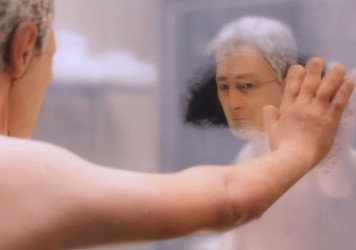Robert Zemeckis and Steve Carell bring heart and humour to the story of Mark Hogancamp, but offer little insight.
Throughout his filmmaking career Robert Zemeckis has repeatedly explored the world through the eyes of lone male figures who exist, for a variety of reasons, at a remove from reality. Think of Tom Hanks in Forrest Gump and Cast Away, Joseph Gordon-Levitt in The Walk and even Bob Hoskins in Who Framed Roger Rabbit. Though superficially different these films all revolve around a central protagonist who is in some way isolated or disconnected from everyone else.
Mark Hogancamp is the latest addition to Zemeckis’ roster of extraordinary everyman types. Played with trademark benign charm by Steve Carell, he’s a smalltown restaurant worker who spends his free time immersed in a World War Two-era model village in his backyard, which he built following a horrific assault that left him with partial brain damage and memory loss. His is a story of courage, survival and triumph over tragedy, though it is not quite as uplifting as it might have been.
Welcome to Marwen is a loose dramatisation of Jeff Malmberg’s 2010 documentary, Marwencol, which is both a compelling portrait of PTSD and a fascinating study of the therapeutic and transformative power of art. Zemeckis is evidently less interested in the specifics of how and why Hogancamp came to create this astonishingly detailed diorama, instead dividing his film’s runtime between scenes of Hogancamp’s mundane day-to-day existence and colourful motion capture animation sequences (a technique he previously utilised in Beowulf, The Polar Express and A Christmas Carol) which transport us inside his vivid imagination.
The fictional Belgian town of the title is populated by Hogancamp’s heroic alias, “Cap’n Hogie”, and a group of female freedom fighters who routinely fend off the Nazis while fluffing up their de facto leader’s ego. Given that they are literally plastic dolls, it stands to reason that the women of Marwen are depicted as strong yet easily pliable, hollow vessels for male wish fulfilment with little agency of their own. What is perhaps more telling is that their real-world equivalents are no more fleshed out.
The film is at its most affecting and relatable when Hogancamp’s relationships with the numerous women in his life – Gwendoline Christie’s Russian carer, Janelle Monáe’s rehab worker, Merritt Wever’s hobby shop owner, Leslie Mann’s kindly neighbour – are brought to the fore. But Zemeckis always seems more preoccupied with delivering high-grade action spectacle than unalloyed human drama. The longer it goes on, the harder it becomes to stay invested in both aspects of the narrative.
For the most part the positives outweigh the negatives, and Zemeckis and co-screenwriter Caroline Thompson deserve credit for not glossing over the small but by no means trivial detail of Hogancamp’s cross-dressing. Yet for all that Welcome to Marwen is an inventive, well-intentioned biography, Hogencamp remains something of a quirky enigma in the hands of Carell and Zemeckis, not unlike several of the director’s earlier protagonists.
Published 2 Jan 2019
Mark Hogancamp’s story is a fascinating one.
Zemeckis gets the best out of Carell, but doesn’t really get close to his subject.
See it, then seek out the 2010 documentary Marwencol.

Robert Zemeckis makes Philippe Petit’s World Trade Centre wire-walk appear as fantasy in this glossy heist movie.

A in-joke re-release of Robert Zemeckis’ lunatic sequel to his original time travel behemoth.

Beauty and tragedy abound in Charlie Kaufman and Duke Johnson’s melancholic stop-motion treasure.